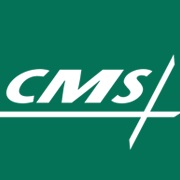CMS Awards $22M for Cost Transparency Under Affordable Care Act
The Affordable Care Act and its regulatory processes have brought more cost transparency for consumers.

- Last week, the Centers for Medicare & Medicaid Services (CMS) announced in a press release that $22 million of funds are available to help state regulators with issuer compliance according to consumer protections under the Affordable Care Act.

This funding will offer many more opportunities for state regulators to design and adopt new strategies for protecting consumers and reforming the federal health insurance exchange. This will consist of meeting some provisions of the Affordable Care Act such as covering preventive services as well as ensuring necessary health insurance benefits.
“These additional grants will continue our partnership with State Departments of Insurance to help support their efforts to ensure their laws, regulations, and procedures are in line with Federal requirements and that States are able to effectively oversee and enforce these provisions under the ACA that provide important consumer protections. In addition, State departments of insurance are vital to the oversight of health insurance plans. These departments are responsible for making sure that premiums are reasonable and justified, ensuring company solvency, and protecting consumers,” Kevin Counihan, CEO of the Health Marketplace, said in a public statement.
“Last year, despite headlines of double-digit premium increases, when financial assistance, consumer shopping and aggressive state rate review were factored in, premiums through HealthCare.gov increased just $4 a month for those receiving tax credits. These additional grants will continue our partnership with states to help support their efforts to enforce consumer protections guaranteed by the Affordable Care Act.”
Additionally, the financial awards could be used to help improve parity in health plan benefits regarding mental health and substance abuse disorders. States could also work toward reducing overall healthcare coverage spending throughout their region utilizing the CMS funds.
When it comes to analyzing the trends and rates among health plans today, state regulators will need to address certain factors, the news release states. These factors involve “medical trend, the end of the temporary reinsurance program, the one-time 2017 moratorium on the Health Insurance Provider Fee, and recent data and policy information.”
CMS also informed the public that a report on risk adjustment and reinsurance for 2015 will be available for viewing on June 30. This data could also affect the rise and fall of health insurance rates.
In early June, the Department of Health and Human Services (HHS) announced that it will be working to strengthen the risk pool, further work with state regulators and issuers, and improve outreach efforts among young adults regarding the federal health insurance market ahead of Open Enrollment 4.
On June 8, CMS announced that it is taking steps to address the risk pool in the health insurance exchange and work to stop the upward pressure on premium rates. As ensured under the Affordable Care Act, these processes will lead to bringing affordable healthcare coverage for millions of citizens across the country.
Essentially, CMS is seeking to create a more diverse mix of enrolled members among health payers operating through the health insurance exchange. This would change the risk pool and potentially keep insurance rates from rising drastically in future enrollment periods.
For instance, the federal agency is looking to put an end to abuses of short-term plans, as these actions often keep the healthiest populations out of the risk pools and, thereby, lead payers to manage the consumers at highest risk and in need of extensive medical care.
Additionally, CMS will be looking to strengthen the risk adjustment program to show more accuracy when it comes to partial-year enrollments. Older consumers turning 65 years of age will also be assisted with transitioning to the Medicare program and away from being served by commercial health payers.
“The Marketplace serves as an essential backstop for consumers as they transition between different types of coverage over their lifetime,” CMS stated in a news release. “For example, many early retirees access Marketplace coverage until they become eligible for Medicare when they turn 65. But once individuals turn 65, most people should end their Marketplace coverage and switch to Medicare.”
“In fact, if consumers do not enroll in Medicare Part B when they turn 65, they could face financial consequences for years into the future, because they could owe higher Medicare premiums. Meanwhile, the Marketplace is intended to serve consumers who are not Medicare eligible, and continued enrollment by individuals who are eligible for Medicare can raise costs for other consumers.”
The $22 million in funding will be part of the state rate review grants that the Affordable Care Act has set aside to help states review potential health insurance rate increases and to hold health payers accountable for any rate hikes without due cause. The news release states that these rate reviews have led to a savings of approximately $1.5 billion among consumers in 2015.
Cost transparency is becoming a more prevalent topic throughout the health insurance industry and payers will need to work with regulators to ensure that consumers have greater transparency regarding the prices of premiums, deductibles, and out-of-pocket spending.
The Affordable Care Act and its regulatory processes have brought more cost transparency for consumers purchasing health plans through state or federal marketplaces. The CMS funding should further assist state regulators in meeting the requirements under the Affordable Care Act to improve cost transparency and insurer accountability.
Dig Deeper:
What Health Insurance Exchanges Should Do to Cut Premium Costs
CMS Awards $32M for Children’s Health Insurance Program
